Start building your flexibility with these four basic yoga poses every beginner should know
Master some yoga basics by following this expert’s tips
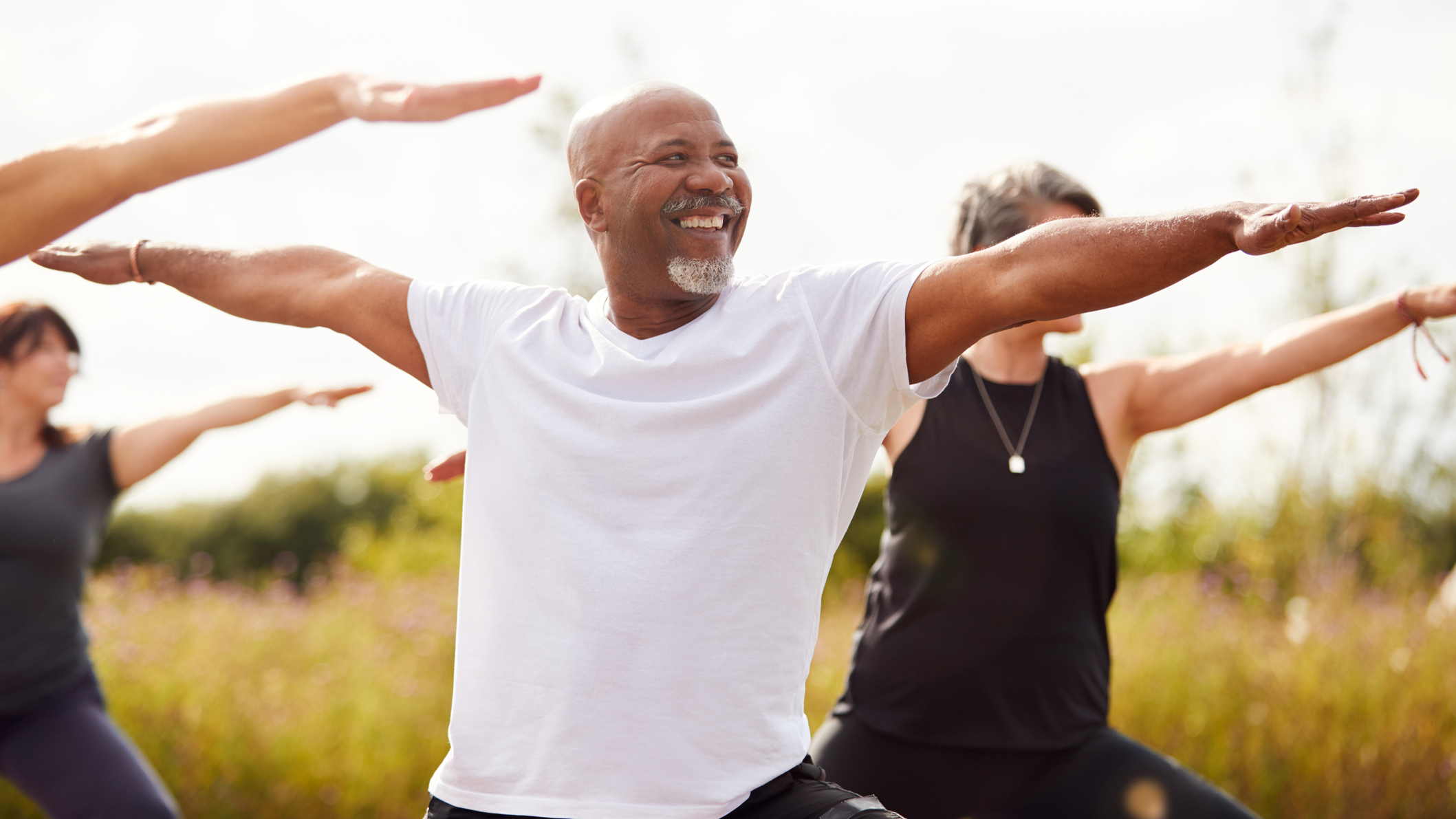
Yoga offers loads of benefits. It can boost your flexibility, improve your core strength, and even boost your mental wellbeing.
However, the practice can seem intimidating if you’ve never done it before—especially if you’ve seen seasoned yogis balancing on one leg or performing complicated headstands.
The good news is that basic yoga poses don’t require impeccable balance and gymnastic-levels of flexibility. In fact, a lot of the fundamental poses (or asanas, as they’re known) are perfectly suitable for beginners.
If you want to try yoga, but don’t know where to start, we’ve got you covered. We asked experienced yoga teacher Gemma Cousins to give us four basic poses for beginners that form the basis of many yoga flows.
Once you’ve mastered these, you can try these other yoga stretches for beginners, and learn how to do a simple 15-minute yoga flow.
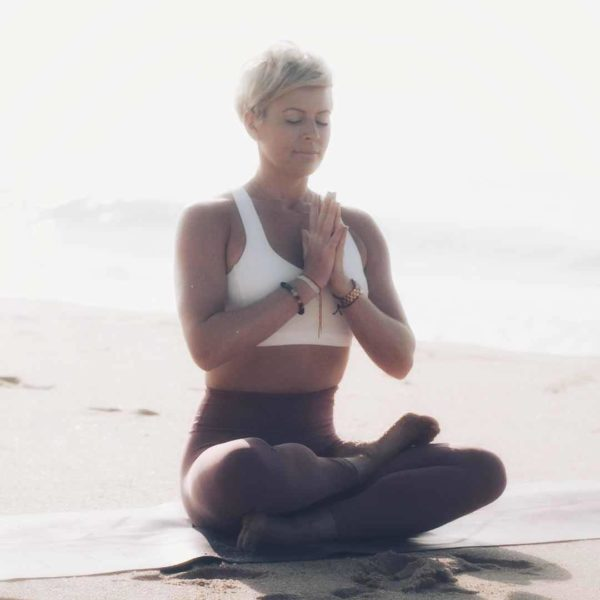
Gemma Cousins has completed over 800RYT hours of teacher training accredited by the Yoga Alliance. She is qualified to teach vinyasa, rocket, mandala, yin, post- and pre-natal, meditation, yoga nidra, kriya and pranayama.
1. Downward-facing dog
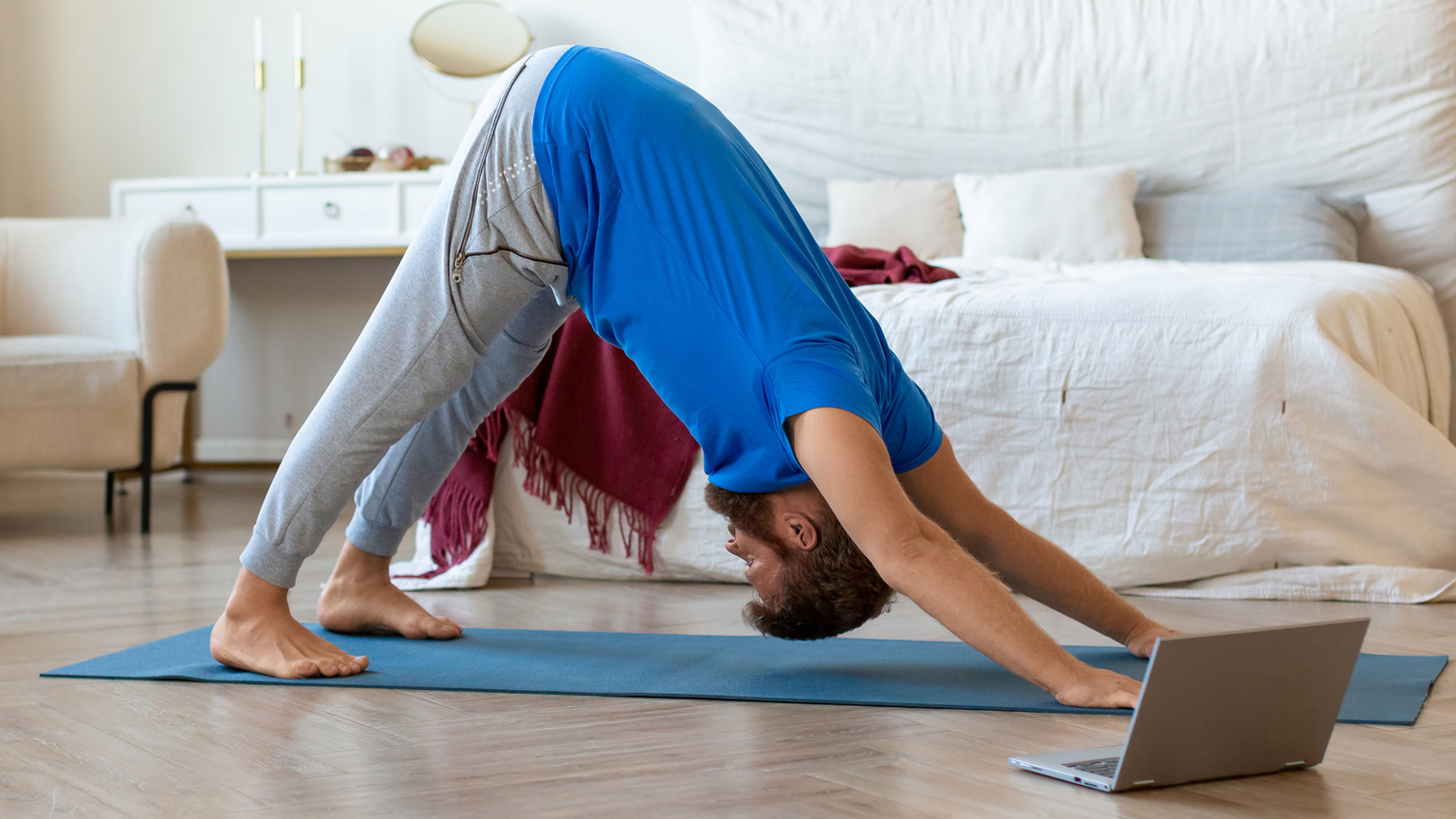
- From an all-fours position, with your palms beneath your shoulders and knees beneath the hips, tuck your toes under and lift the knees.
- Spread your fingers and press them into the ground as you lengthen through the spine, sending your hips up and back towards the sky.
- Simultaneously, stretch the back of your legs by pressing your heels toward the ground (but don’t worry if they don’t reach the floor). Keep a soft bend in your knees if your hamstrings are tight.
- Draw your heart towards your thighs, relax your head, engage your core and focus on your breath.
Benefits of downward-dog
- Builds wrist, arm and upper body strength.
- Stretches the spine and back body.
- Lengthens and stretches the hamstrings and calves.
2. Child’s pose
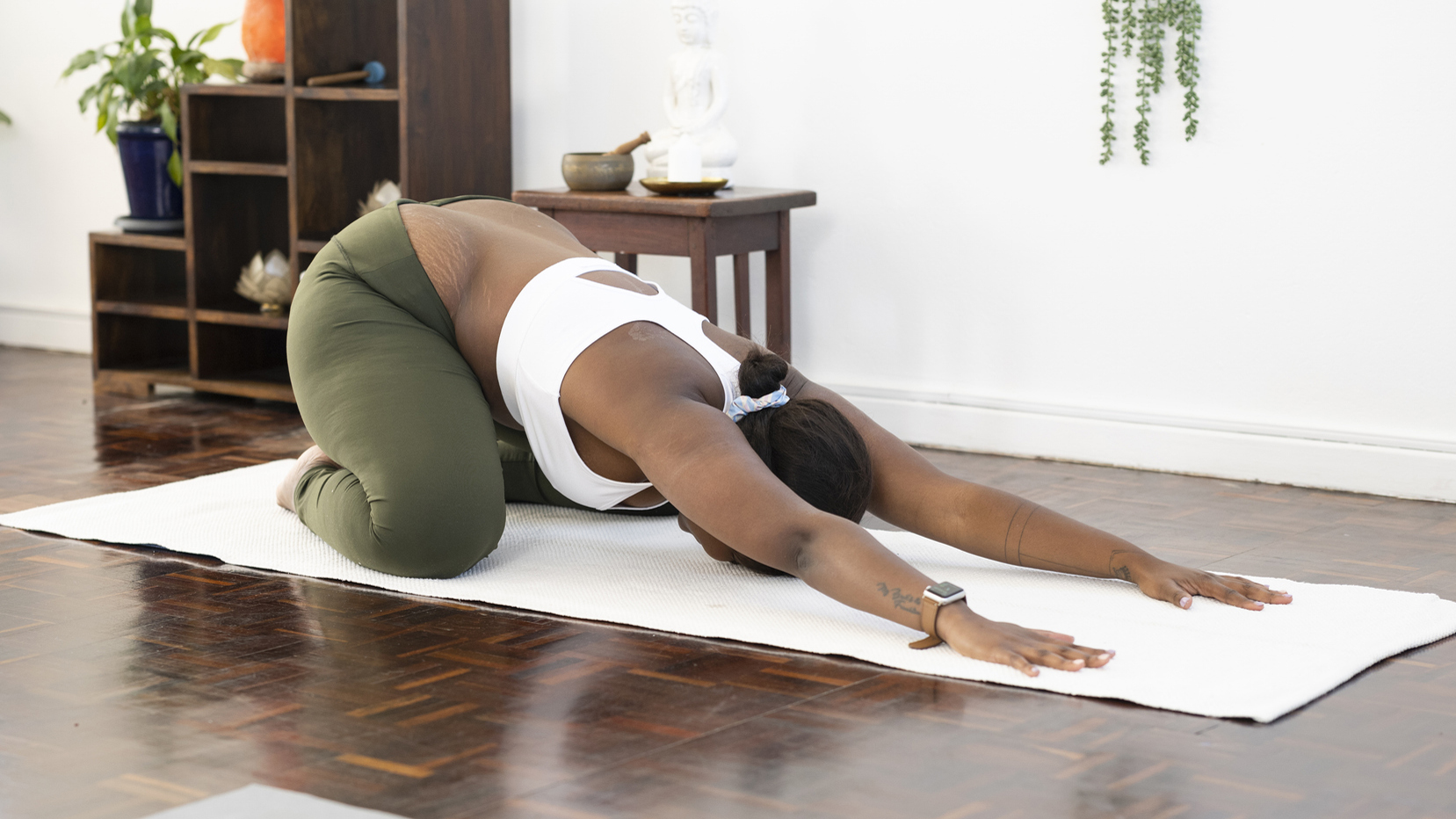
- Begin on all fours, bring your big toes together and open your knees slightly wider than your hips.
- Draw your hips back towards your heels as you extend your arms forward and allow your forehead to meet the ground. You can rest your forehead on your hands if your head doesn’t reach the floor comfortably. You can also place a blanket under your knees or rolled up under the tops of your feet for comfort if you wish.
- Visualize your breath moving up and down your spine.
Benefits of child's pose
Get the Fit&Well Newsletter
Start your week with achievable workout ideas, health tips and wellbeing advice in your inbox.
- Calming, restful pose.
- Stretches the spine and lower back.
- Opens the hips.
- Stretches the ankles.
3. Warrior two
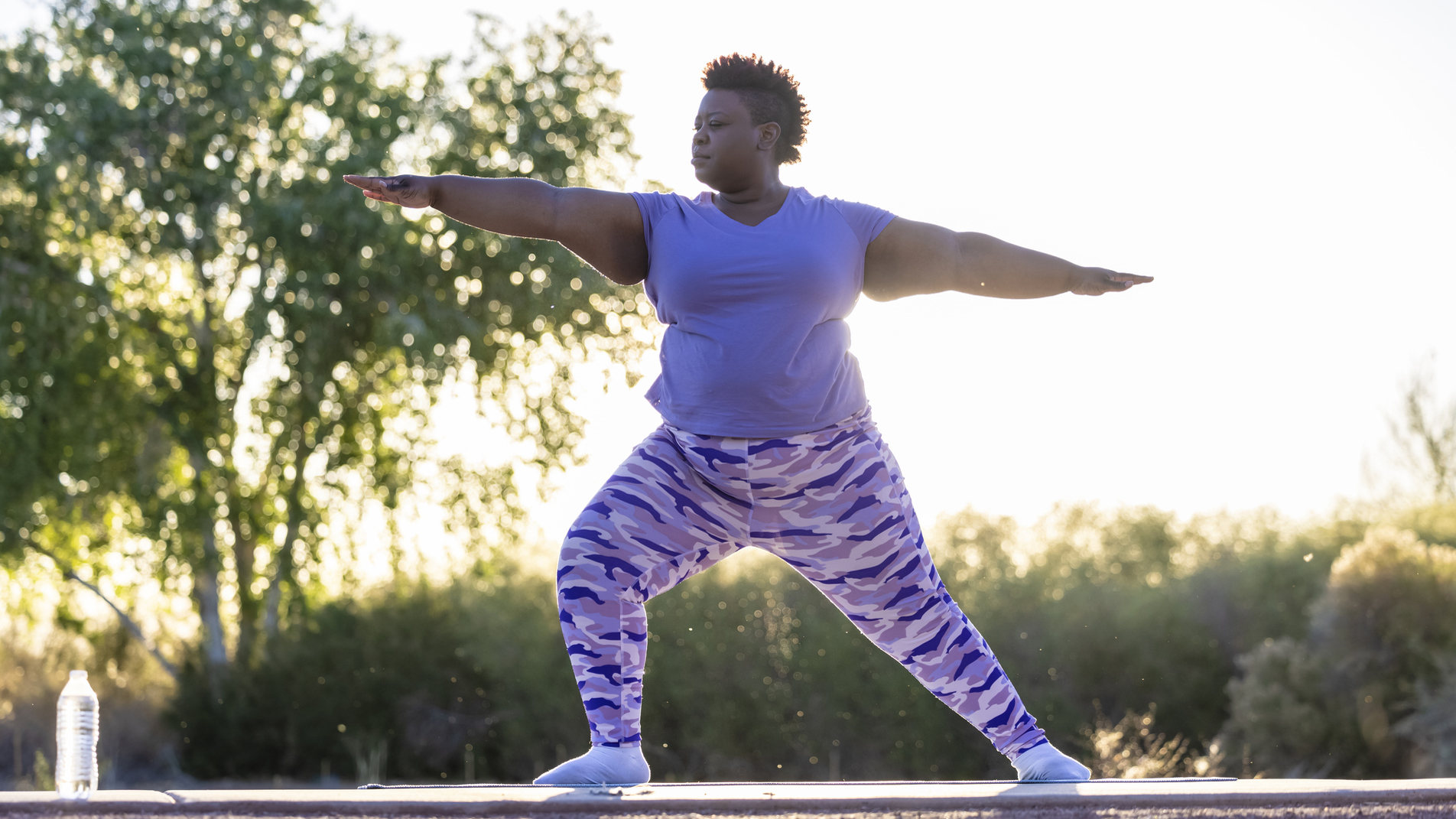
- Stand along the long edge of your mat with your feet far apart. Turn one foot out to point towards the top of the mat and the other foot to face the long edge of the mat.
- Bend the leg of the foot pointing out so your knee aligns over your ankle. Press into the little toe side of your back foot.
- With your hips level and facing forward, raise the arms to the sides at shoulder height, palms facing down and look beyond the front middle finger.
- Lengthen down the back of your body and draw up the front of your body.
Benefits of warrior two
- Stretches your hips, groin and shoulders.
- Builds stamina and strength.
- Develops balance and stability.
4. Supported bridge pose
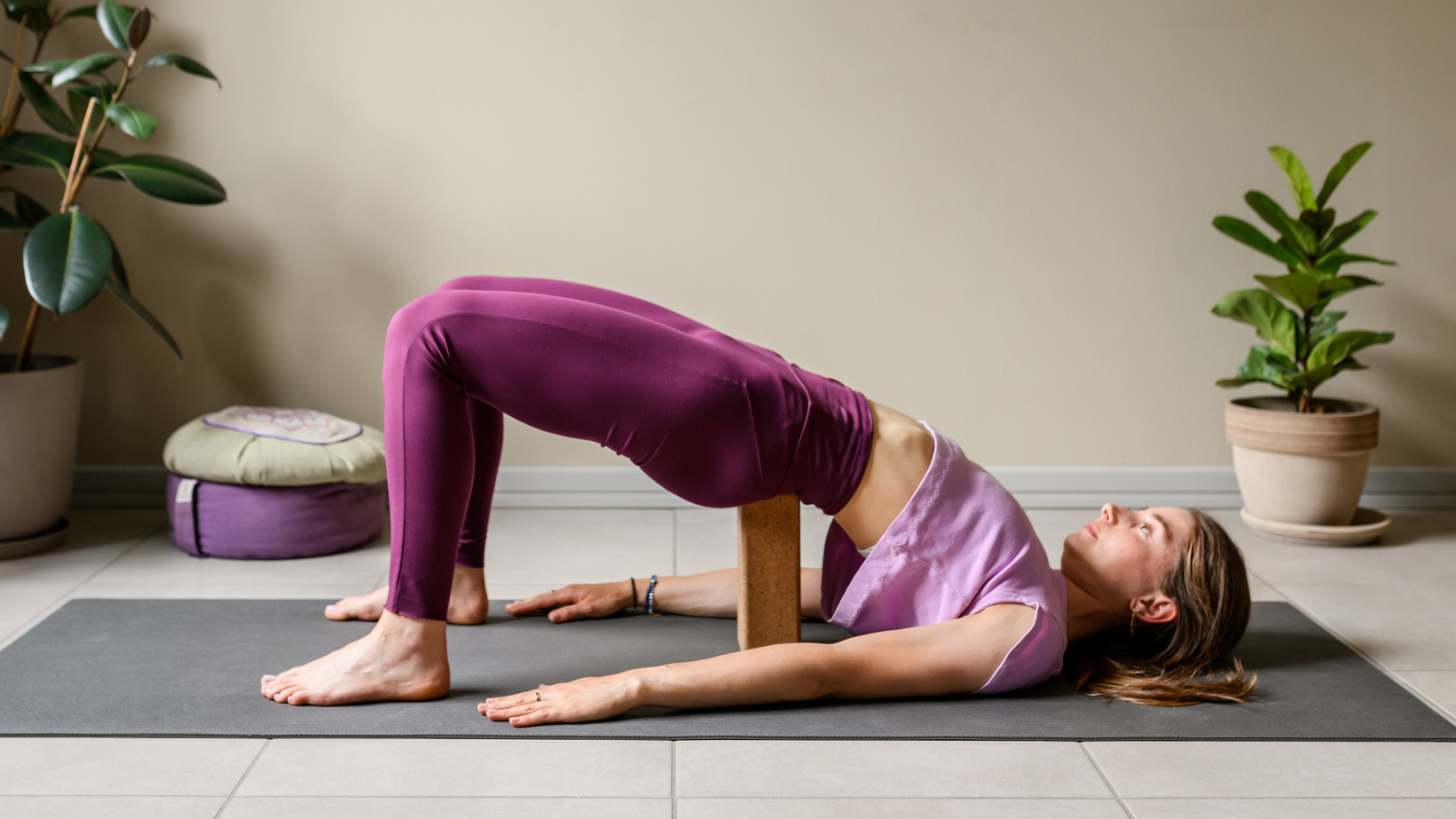
- Lie on your back, arms to the sides of the body, palms facing down. Keep a yoga block or firm cushion nearby.
- Bend your knees, and bring your heels towards your buttocks. Press your feet into the ground and lift your hips.
- Slide a block under your sacrum. You can either lie the block flat or prop it up vertically. Find what’s comfortable for you. You can also use a cushion or rolled blanket in its place.
- Keep the soles of your feet grounded into the mat, or to deepen the stretch you can extend your legs and rest your heels on the ground. You can also keep your arms alongside the body, or you can extend your arms over your head and let the backs of your hands rest on the ground to open your chest and armpits.
Benefits of supported bridge pose
- Stretches the hip flexors and quads.
- Decompresses the spine, potentially relieving lower back pain.
- Calms the nervous system and cultivates relaxation.
What are the overall benefits of yoga?
"There are endless physical benefits to practicing yoga—strength, balance, flexibility—but the real beauty of this practice comes in its ability to bring about a change in our mental wellbeing, reducing stress, quieting busy minds, aiding in better sleep, increased energy levels and brighter moods," said Cousins.
Have a look through our round-up of the best yoga mats, if you need something to support your practice

Lou Mudge is a Health Writer at Future Plc, working across Fit&Well and Coach. She previously worked for Live Science, and regularly writes for Space.com and Pet's Radar. Based in Bath, UK, she has a passion for food, nutrition and health and is eager to demystify diet culture in order to make health and fitness accessible to everybody.
Multiple diagnoses in her early twenties sparked an interest in the gut-brain axis and the impact that diet and exercise can have on both physical and mental health. She was put on the FODMAP elimination diet during this time and learned to adapt recipes to fit these parameters, while retaining core flavors and textures, and now enjoys cooking for gut health.
-
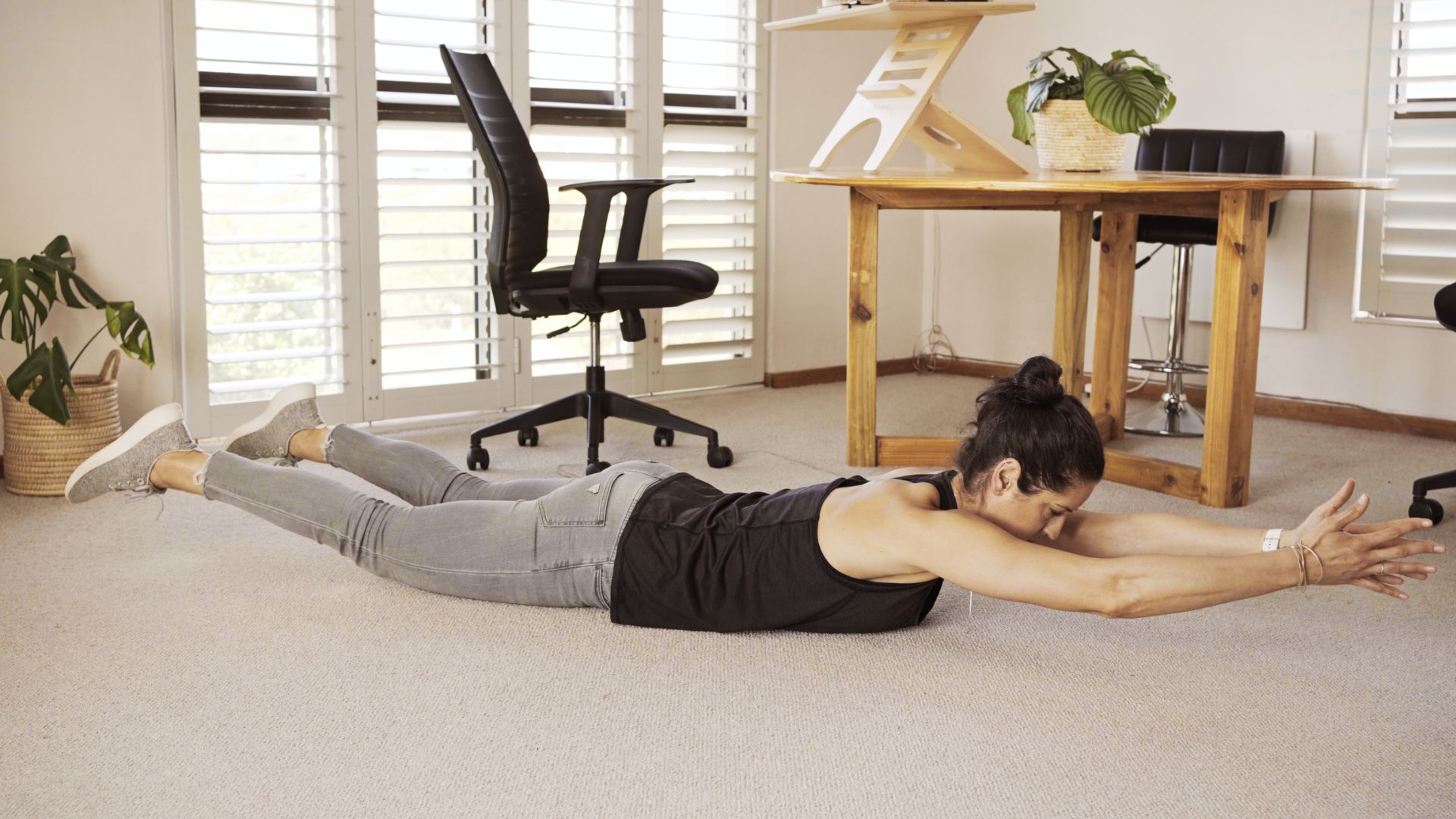 You don't need any equipment to improve your posture—just these three back-strengthening moves
You don't need any equipment to improve your posture—just these three back-strengthening movesThese three exercises will strengthen key back muscles
By Jennifer Rizzuto
-
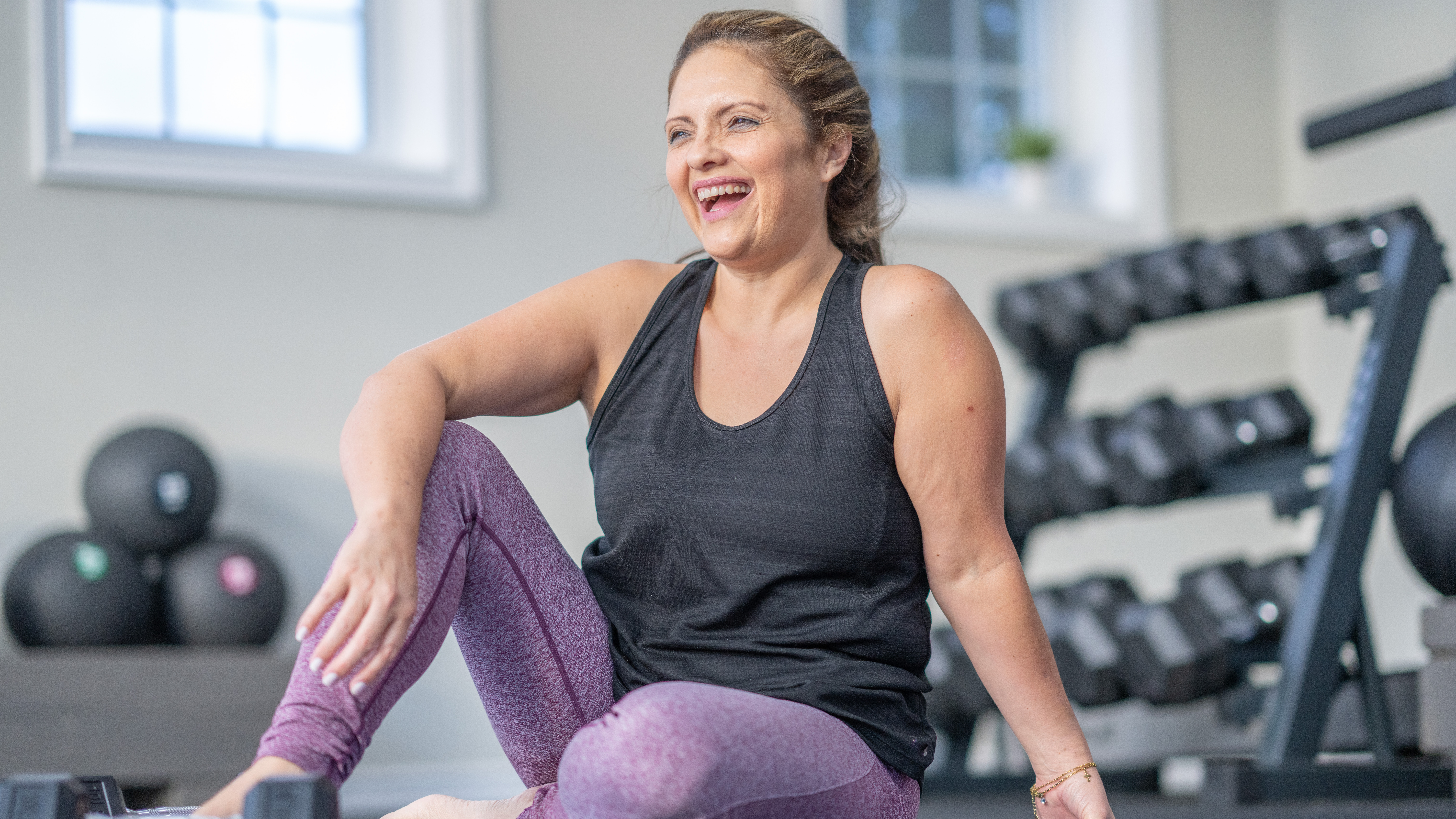 "If I could choose just five moves to future-proof my body, these would be it"—A trainer says this longevity workout will help you build lasting strength and mobility
"If I could choose just five moves to future-proof my body, these would be it"—A trainer says this longevity workout will help you build lasting strength and mobilityBy Lou Mudge